When Kayla Godowa-Tufti was a child, she used to play in her backyard. A railroad tie was situated in the lawn. On hot days, she recalls the tie smelled of tar and chemicals.
In 2015, she brought her newborn baby from the hospital to her house on West Eugene’s Roosevelt Boulevard. That day, she smelled the heavy tar scent throughout her neighborhood again — it was familiar but unpleasant.
And she still gets hints of it every once in a while. Whenever she smells it, she pulls her two children — a 2-year-old and a 6-year-old — inside the house, concerned about what they might be exposed to.
“Sometimes you can’t smell anything else,” Godowa-Tufti says.
On the other side of Roosevelt Boulevard, an industrial wood treatment plant pumps creosote, a coal tar pitch used to preserve wood, into railroad ties and other wood products. According to the Oregon Health Authority, the odors in West Eugene come mostly from creosote and pentachlorophenol, another chemical used in wood treatment. Godowa-Tufti says the heavy tar smell led her to file four complaints with Lane Regional Air Protection Agency in the last several months.
Since 2000, locals have filed over 3,500 air pollution complaints about West Eugene with LRAPA. Backed by the environmental nonprofit Beyond Toxics, West Eugene residents have created an environmental justice movement of their own.
According to the city of Eugene’s Toxics Right to Know database, 96% of Eugene’s industrial pollution in 2019 was within one zip code: 97402, which includes almost all the area west of Highway 99 in Eugene. The Oregon Health Authority has identified two superfund sites, places contaminated with exposed hazardous materials, in the area: the Union Pacific Railroad Headquarters and the J.H. Baxter wood treatment plant, which is across the street from Godowa-Tufti’s house. Neighbors say they’re concerned that the area’s industrial pollution, particularly from J.H. Baxter’s decades of operations, may increase the cancer risk for nearby residents. Prior investigations haven’t found a definitive link between local cancer cases and J.H Baxter, and state officials continue to investigate.
According to Beyond Toxics’ statewide environmental justice coordinator Ana Molina, the heavy pollution in West Eugene is an example of environmental racism: when communities of color are disproportionately affected by pollution.
The neighborhoods of West Eugene — including Bethel, where Godowa-Tufti lives — have higher percentages of BIPOC residents. According to a 2011 study from the City of Eugene, 15% of the Active Bethel Citizens neighborhood population is BIPOC. That’s compared to, for example, just 11% in the Cal Young neighborhood of North Eugene, where less than 1% of all industrial pollution occurs, according to Eugene’s Toxics Right-to-Know Program.
Across the country, communities of color have faced environmental racism. An example is Flint, Michigan, where lead contamination disproportionately affected people of color.
Godowa-Tufti is Kalapuyan and a member of the Confederated Tribes of Warm Springs, and her husband is a member of the Comanche Nation. Godowa-Tufti moved to her current home on Roosevelt in 2015 to raise a family because she couldn’t afford to live elsewhere.
“It’s very easy to get stuck in that feeling of being trapped and being frustrated,” she says.
She says the big polluters in West Eugene are not only taking away her right to a clean environment but violating treaties that provide claim to the land for local tribes.
“It’s bad land stewardship to be a heavy polluter like that,” she says.
Godowa-Tufti has been actively working with Beyond Toxics to voice her concerns. The group holds community meetings to put residents in direct contact with representatives from LRAPA, the Department of Environmental Quality and local politicians, like Mayor Lucy Vinis and City Councilor Claire Syrett.
In 2011, Beyond Toxics published an environmental justice report for West Eugene. The report challenged the efficacy of traditional environmental risk assessments, claiming the models focus only on the “highest tolerable rate” of a chemical based on certain indexes and models. They conducted a community-based health study in West Eugene, which prioritized vulnerable groups and considered factors like socioeconomic status, geography, land use patterns and cultural differences. They’re also making a difference in the community by holding polluters and environmental agencies legally accountable.
In March 2021, the Oregon DEQ fined J.H. Baxter over $200,000 for the unpermitted disposal of hazardous waste generated from the wood treatment process, and the unauthorized release of untreated stormwater from its property. But, according to Molina, fines don’t always hold polluters accountable because they can usually pay them without issue. She also says the money from fines doesn’t go back to the community where the pollution occurred.
In March 2021, J.H. Baxter filed an administrative appeal with DEQ, which can reach an administrative judge if mediation is unsuccessful. It denied almost all of the DEQ’s accusations. J.H. Baxter did not respond to Ethos’ request for comment.
“It’s just a fine,” Molina says. “These companies have millions of dollars, and they’re not gonna stop doing what they need to do to reach their bottom line.”
Beyond Toxics partnered with lawyer Chris Nidel from Washington D.C. and helped him find plaintiffs to represent the community in a class-action lawsuit he filed last spring against J.H. Baxter. One of these plaintiffs is Godowa-Tufti.
The suit defines “J.H. Baxter class” as anyone living within a 4-mile radius of the plant. These are the people who have claims in the suit.
According to Nidel, a class-action suit can more efficiently benefit a larger number of people compared to an individual suit. The suit claims that contamination of lawns and residences hurts property values and contributes to the loss of use and enjoyment in the surrounding neighborhoods.
Still, there’s downsides. The suit doesn’t cover personal injury or any health effects beyond burning noses and eyes. Those who have been diagnosed with cancer or other serious illnesses won’t receive compensation under the class action.
The suit is asking for $750 million in damages – Nidel says he won’t settle for anything less.
Last spring, Nidel introduced himself at a West Eugene community meeting held on Zoom. Behind him, his wife tended to their dog, who has lymphoma.
In 2019, Nidel met Carol Lafon in a Facebook group for cattle dog owners. She lives near the intersection of Roosevelt Boulevard and Danebo Avenue, about a mile away from the J.H. Baxter plant. She remembers letting her dogs – Hali, a labrador, and Buddy and Dingo, both cattle dogs – play in the small creeks near her house, and they smelled worse than the usual wet dog stench.
“The community stinks really bad,” Lafon says. “It’s a putrid smell.”
In 2018, Hali’s fur started to fall off. Lafon took her dog to the vet and learned Hali had hemangiosarcoma, a common cancer in dogs that affects blood vessels. The next morning, she left her home to search for cancer medications; when she returned, Hali had blood dripping from her nose onto the carpet. Ten days later, Hali died.
Within the next year, her two cattle dogs would also be diagnosed with cancer –– Buddy with hemangiosarcoma and Dingo with lymphoma. Buddy died within days of diagnosis. Dingo battled the lymphoma for a year and a half before passing. Lafon was heartbroken and puzzled. She was aware industry was nearby but didn’t know she and her dogs were exposed to chemicals. Lafon says she believes this exposure led to cancer.
“My animals never got sick before,” Lafon says. “I was always making sure the food they ate didn’t have any kind of chemicals.”
Even though Lafon says her dogs were healthy besides the potential pollution exposure, it’s difficult to directly link the cases to environmental factors. Dr. Kristen Couto is a veterinary oncologist with the Veterinary Referral Center of Central Oregon. She says she’s unaware of any known impact of environmental toxins on the development of hemangiosarcoma in dogs. While there is some evidence linking lymphoma in dogs to their environment, she says that cancer usually depends on a mix of other factors.
“Hemangiosarcoma and lymphoma are two of the most common cancers we see in dogs,” Couto says. “It becomes challenging to understand what type of environmental or genetic risk could be because they are so common.”
Still, she says, when dogs are exposed to carcinogens, it’s likely humans are too because of the shared living environments.
And it wasn’t only dogs who were getting sick at the time. For 22 years, Arjorie Arberry-Baribeault, a Black mother and cosmetologist, lived and raised a family in West Eugene’s Bethel neighborhood.
On Sept. 27, 2018, at the age of 13, her daughter was diagnosed with Hodgkin’s lymphoma, a type of cancer that affects a part of the immune system.
“That date is permanently seared in our family’s minds,” Arberry-Baribeault says.
The news devastated Arberry-Baribeault but also confused her. Neither she nor her partner had any family history of cancer. According to the Mayo Clinic, Hodgkin’s lymphoma is most common in people ages 20-40 and over 55. As her daughter began chemotherapy and stem cell treatment, the cause of the cancer remained a mystery.
Although sometimes Arberry-Baribeault would notice strange smells after stepping outside her house, she says it didn’t concern her.
Then, in October of 2020, the son of Arberry-Baribeault’s best friend of 30 years was diagnosed with Hodgkin’s lymphoma, also at age 13. Arberry-Baribeault says she had a feeling these two strange diagnoses, just over two years apart, weren’t a simple coincidence.
“I wasn’t really thinking that I was putting my child in danger by letting them play in the sprinkler outside or letting them ride their bike,” Arberry-Baribeault says.
Once she began researching the health effects of harmful chemicals, she says she realized living in the industrial zone could have led to her daughter’s cancer. The problem is that it’s difficult to prove. According to OHA’s website, health assessments from the agency “cannot draw direct associations” between local cancer cases and the J.H. Baxter facility because of “limitations in cancer registry data.” However, OHA is working on a cancer analysis of the community around the facility.
Once released, the results will bolster existing knowledge about cancer in the community. OHA conducted similar reports in 2006 and 2008. Neither found a definitive link between cancer cases and J.H. Baxter.
OHA also plans to complete a health consultation by spring 2022. The consultation will include data from DEQ soil samples taken in September 2021. These soil samples will complement new data from OHA and LRAPA’s Cleaner Air Oregon program, which will assess air pollution risks in the area. LRAPA expects the facility to complete the program in 2022.
The U.S. Environmental Protection Agency has classified two chemicals J.H. Baxter uses to treat wood – creosote and pentachlorophenol – as “probable human carcinogens.” The Agency for Toxic Substances says those living near a wood preserving facility are at risk for exposure to creosote, especially if the facility discharges the chemical into the air or the ground — the agency also says children who play in contaminated soil are at risk for creosote exposure.
The leaking of toxic chemicals from the wood treatment process over the decades have contaminated soil at J.H. Baxter, state officials say. Regulators finalized a plan for J.H. Baxter to clean up its on-site contamination in 2019, and an investigation is underway to determine the extent of soil contamination.
Arberry-Baribeault took to Facebook, trying to spread the word around West Eugene. That’s when Lisa Arkin, the Beyond Toxics’ executive director, asked her to join the nonprofit’s team. Arberry-Baribeault now connects community members and educates them about pollution in the area as the West Eugene community organizer.
“We can’t get anywhere without the community,” Arberry-Baribeault says. “That is the most important thing.”
But even with the leadership from Beyond Toxics, the battle for justice moves slowly. The class-action suit could take years to settle, and actions from enforcement agencies can take years of environmental review to implement. Lafon expressed concern that action from government agencies is moving too slowly while the community continues to be exposed to toxins. Arberry-Baribeault agrees. She also says the fine isn’t good enough.
“There’s no amount that’s worth my child’s life,” Arberry-Baribealt says.
Earlier this year, Arberry-Baribeault’s daughter fully recovered from Hodgkin’s lymphoma after doing 25 chemotherapy sessions and six surgeries over a span of two and a half years. But Arberry-Baribealt says she’s still concerned about her daughter’s well-being because of her continued exposure to pollution. She attended Willamette High School in Bethel School District.
Within two miles of the school, there are 13 industrial polluters.
West Eugene school districts like Bethel also have more BIPOC students than other districts. Beyond Toxics’ 2010 environmental health survey found 60% of residents in West Eugene reported “significant concern about asthma” and other cardiovascular diseases. Among students in the Bethel school district, the asthma rate is 14.33%, compared to 8.08% among all Eugene students outside of the Bethel district.
As a mother of two, Godowa-Tufti is concerned for her children’s health. But she’s also a student at the University of Oregon. When she heads to campus, the wood treatment plants disappear. She can breathe without questioning what’s in the air. It’s almost as if she’s in another world.
Many people she’s talked to at UO aren’t aware of the pollution in West Eugene. With the Bethel neighborhood on the other side of Highway 99, away from downtown and UO, people in Eugene don’t see or smell the chemical releases from industry unless they live near it.
Arberry-Baribeault says this lack of awareness needs to change.
“Since 1994, people have been making complaints about these issues, and nobody is listening,” she says. “There’s a lot of people in West Eugene who feel like their voices don’t matter.”
The environmental justice movement in West Eugene has gained some attention from local media and representatives in recent years. But as the stench still lingers in West Eugene, Beyond Toxics and the community have more work to do.
“I’m a very optimistic person,” Molina says. “We can do better. Things can change, and we really need to hold these companies accountable and take care of the communities where this is happening. Because at the end of the day, we all need clean air; we all need water.
Kayla Godowa-Tufti poses with her daughter next to her elementary school in West Eugene Nov. 20, 2021. Godowa-Tufti has been a resident of the West Eugene neighborhood — which is surrounded by industrial polluters — for the past six years. Godowa-Tufti smells tar almost every day from the industrial polluters that neighbor her home. She is concerned about how the pollutants will affect her family and her daughter’s elementary school –– which is also in close proximity to the various factories in the area. “Kids that don’t even live next to the facility get bussed here, and they have to interact with those toxins,” Godowa-Tufti says.


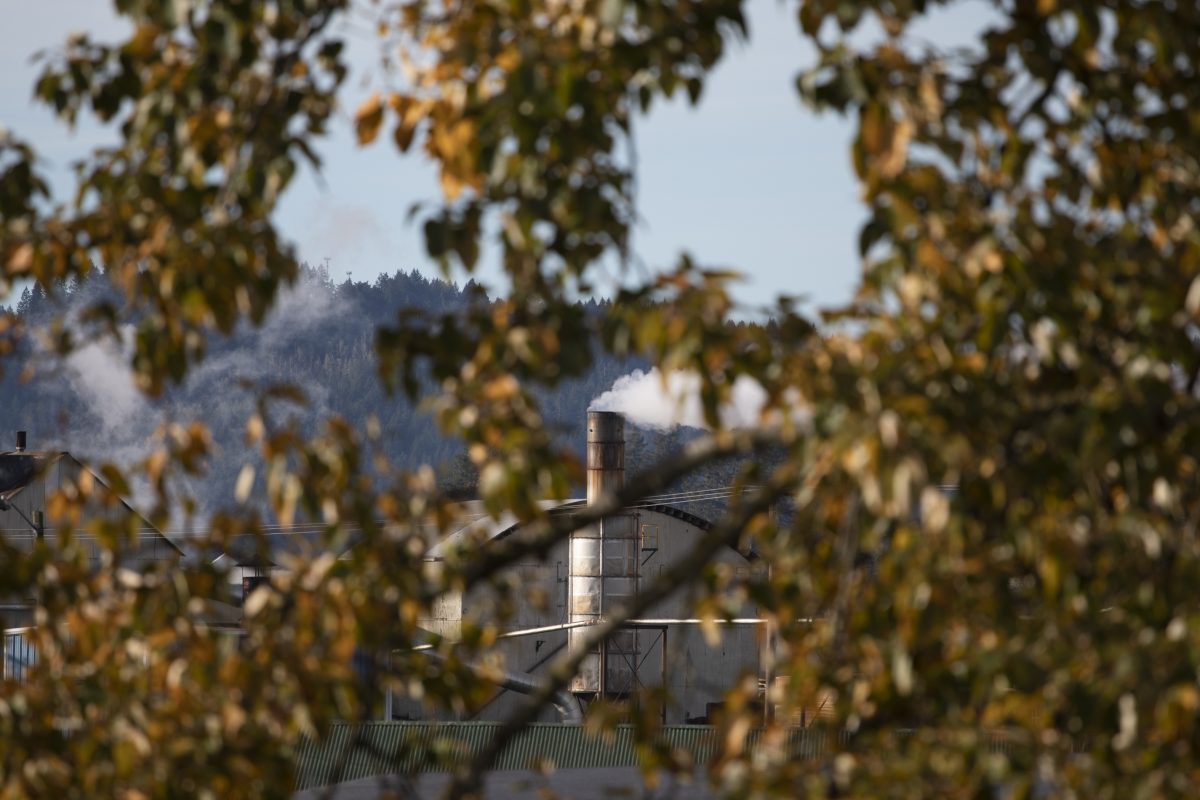
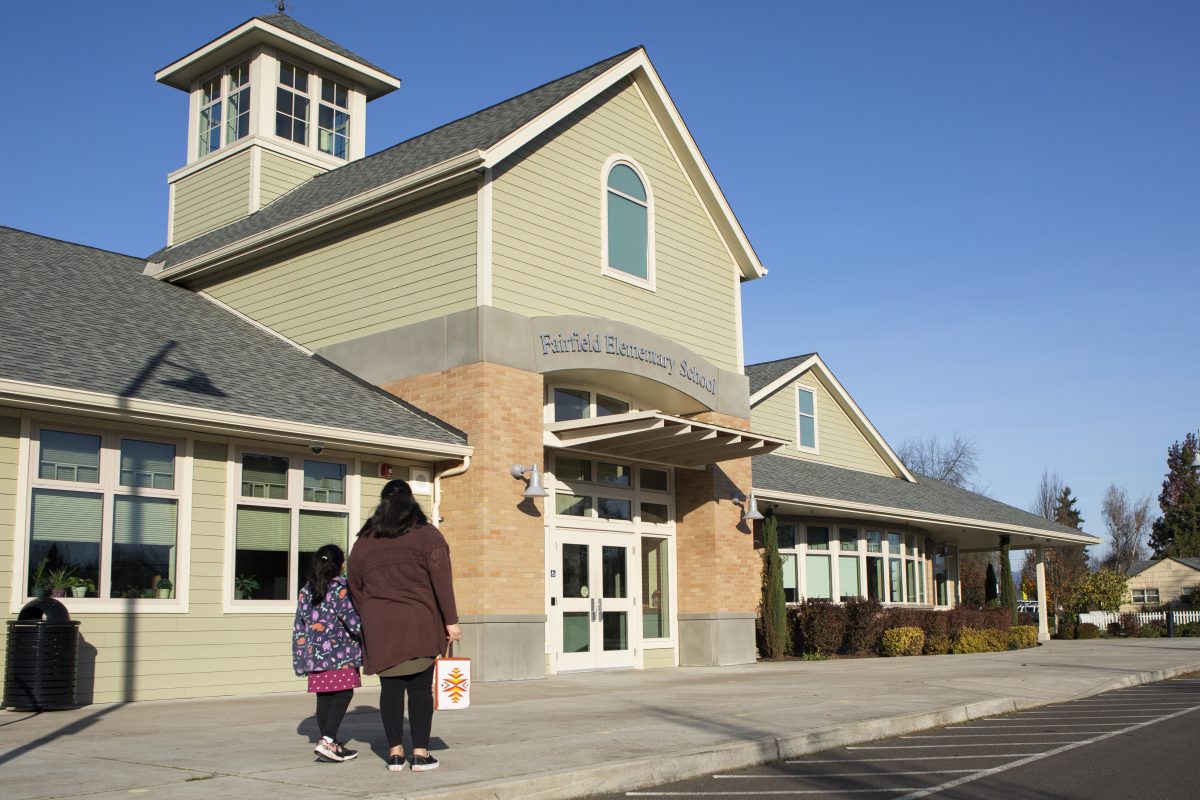
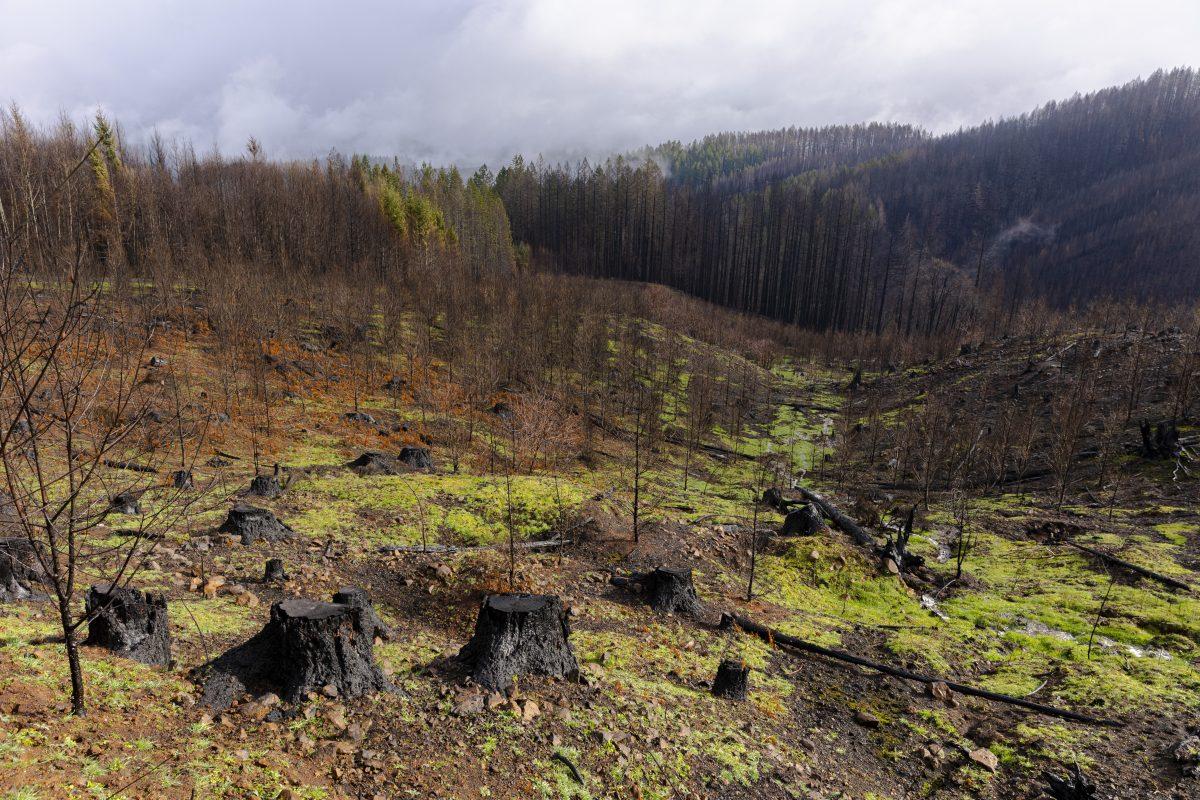


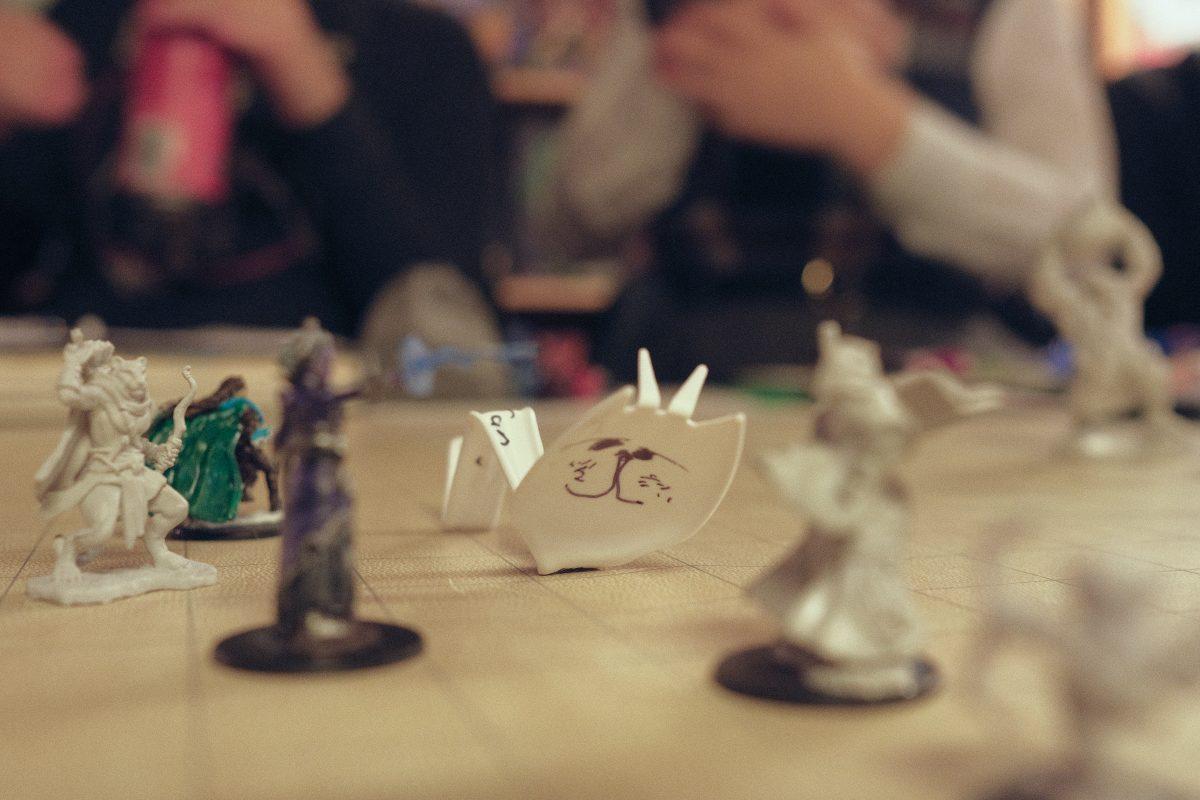

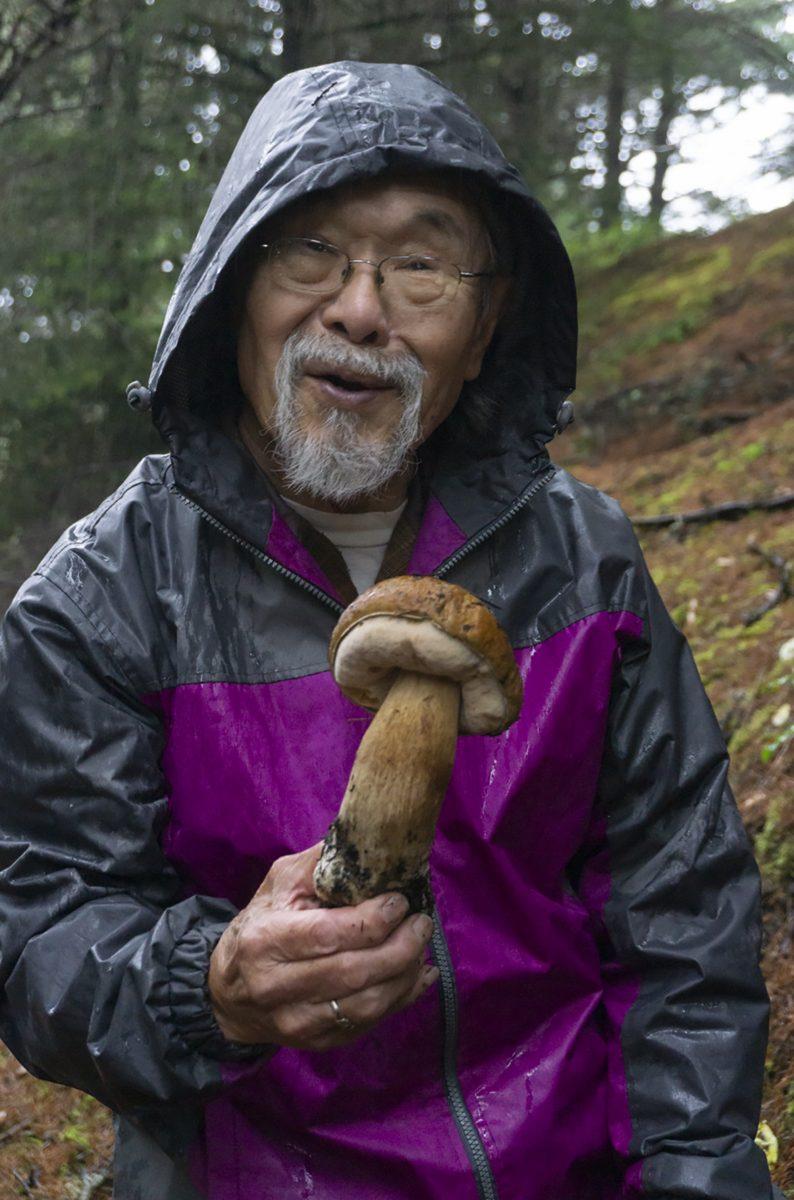


![[Photo Courtesy of the Lara Family]
Ruben embraces his beloved childhood goat, Katrina.](https://ethos.dailyemerald.com/wp-content/uploads/2025/05/katrina-1-1060x1200.jpg)


